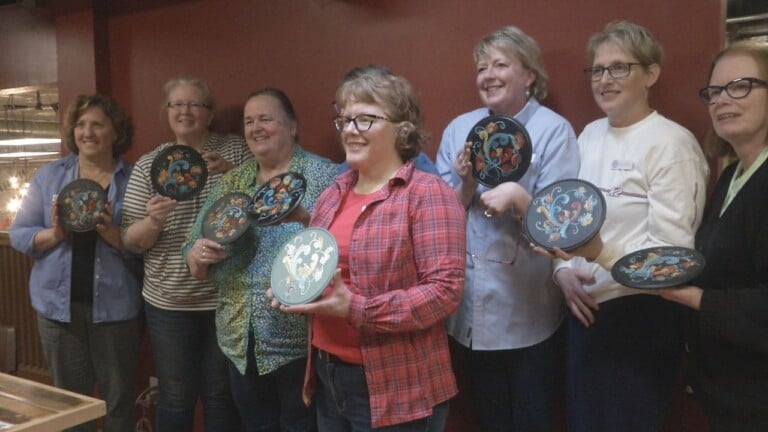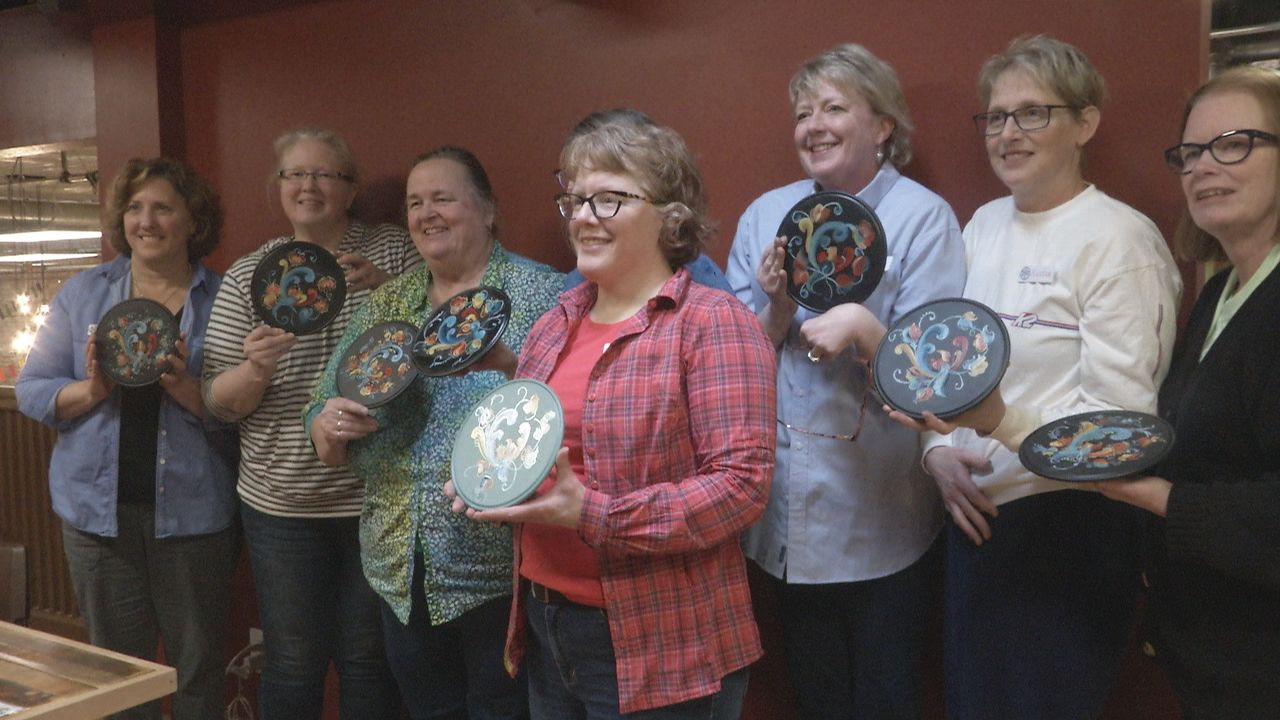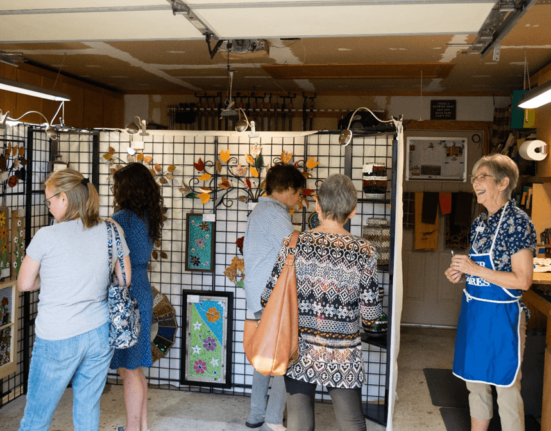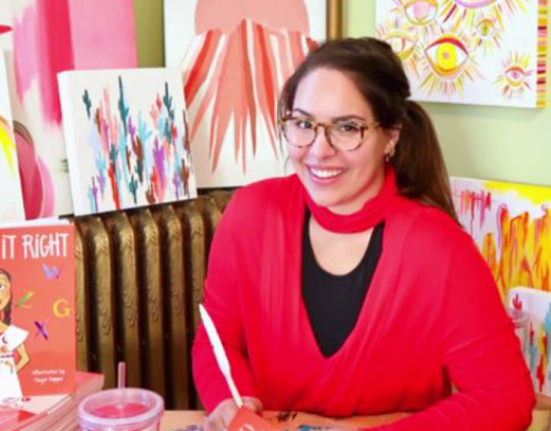Traditional rosemaling artist Michelle Carlson taught a class at the Duluth Folk School on Sunday

DULUTH, Minn. — For six hours on Sunday, Grand Rapids-based artist Michelle Carlson was doing what she loves the most, sharing the Norwegian folk art style of rosemaling. She taught a class at the Duluth Folk School, taking beginner and novice rosemalers through the entire process.
Carlson has spent thirty years on perfecting her craft, but the practice dates all the way back to the 1700s. The art form was used to decorate home’s darkened interiors, caused by open flame hearths. Rosemaling made its way to Wisconsin and northern Minnesota with Norwegian immigrants, on their plates, trunks, cabinets, and more. Although there was a resurgence of the art form in the 1950s, Carlson said its becoming harder and harder to find other traditional artists.
“I’m so enthused to be able to share it, continue it because we we’ve seen more and more rosemalers from before who are no longer with us,” Carlson said. “And so anything I can do to continue to share it and teach it to others is so important for me.”
For Krista, Kara, and Sara Osmundson, the class offered a unique way to connect with each other and their Norwegian heritage. The sisters said they grew up surrounded by the culture, but getting to create their own traditional art was something special.
“At the beginning of class when they gave us an introduction to kind of the history of rosemaling, and thinking about it as the need to pass it on. Yeah, I connected really with that for the first time.” Krista said.
Her sisters added the class was extremely rewarding and it was an opportunity to learn and work through mistakes. Carlson wants to encourage anyone interested in rosemaling to try their hand, even if it looks intimidating.
“Take a class and, you know, try it and see what it’s like,” Carlson said. “It just takes time to understand. I know how to do the stroke work and the color combinations. We would love to have you in a class!”
Rosemaling is just one of hundreds offered by the Folk School, which emphasizes ‘bringing people together to share through skills, knowledge, and life experiences’ and creating community.
“When we say community, it revolves around something that I think is very innate in most humans,” said co-founder Time Bates. “And that’s doing hands-on things and being creative and problem solving. So handcrafting is an opportunity to kind of take us back to who we are as humans, but also do that in a in a social setting.”
Carlson said she feels “very blessed” to have a space like this to share her art. Bates added its incredibly heartwarming to see people come back time and time again and to see the school become a part of the fabric of Duluth.







